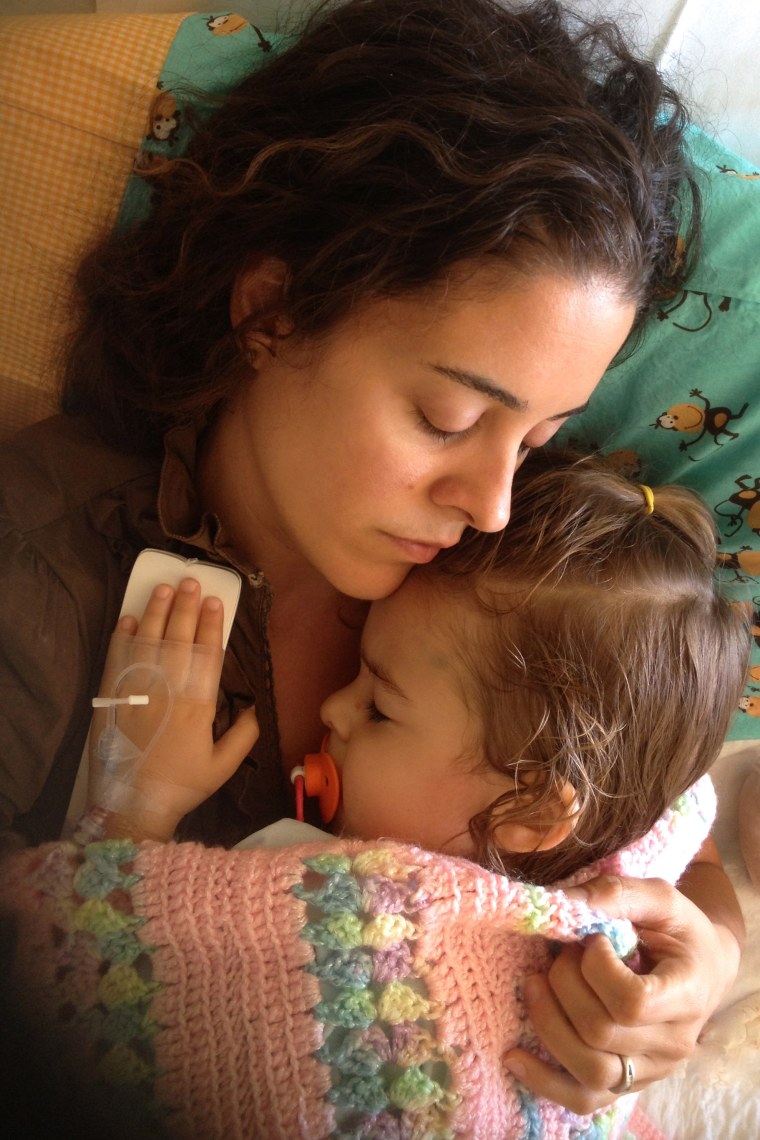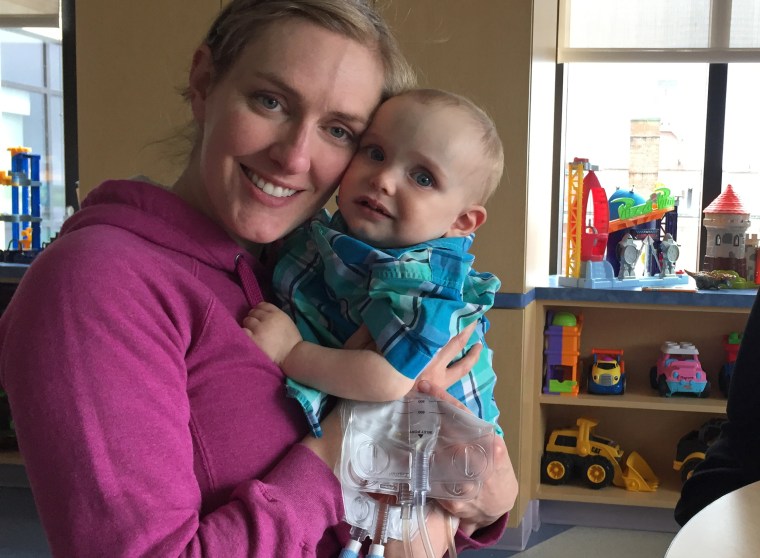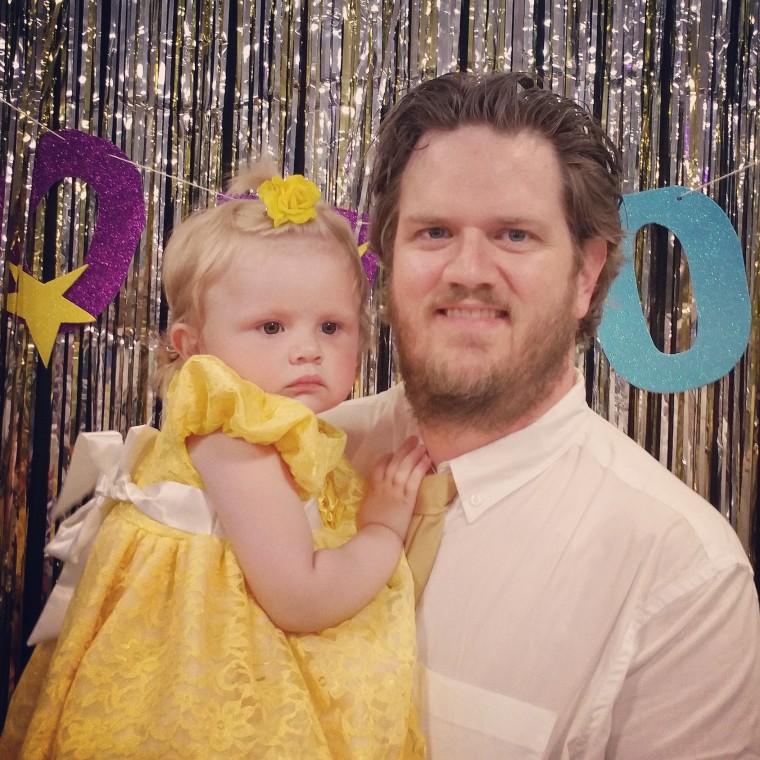When 3-year-old Natalie Gorsegner was diagnosed with leukemia in 2012, the bottom fell out of her parents’ hearts — and later, when the bills rolled in, their pocketbooks.
“We were in shock,” said her mother, 38-year-old Andrea Verdone Gorsegner, a mother of two from Middletown, N.J., whose husband Dan owns a small flooring business. “They never go over the costs. You have to be prepared for one of you to leave your job. Cancer diagnosis is a full-time job.”

With grueling chemotherapy treatments ahead and Andrea leaving her job as a magazine photo editor to care for Natalie, the family was emotionally and financially devastated. Despite having great insurance and selling their house to compensate for the loss of Gorsegner's income, the medical debt alone topped $25,000.
So like many other Americans coping with the high cost of cancer care, the Gorsegners got help from Internet crowdfunding.
Related: 'Utterly Broken': The High Cost of Surviving Cancer
Grosegner was initially hesistant to take money from others, but agreed to letting a work friend post Natalie’s story on DonationTo.
Donations began to pour in from friends and strangers alike, raising $13,000 and covering more than half of their medical expenses.
“I couldn’t believe it," says Gorsegner. "We got one $1,500 gift from an anonymous stranger.”
Lots of options
There are no statistics on how many patients use crowdfunding to pay for medical bills, but anecdotally, those in the cancer world say it’s on the rise.
There are all kinds of medical pleas on sites like YouCaring.com, FundRazr, GoFundMe, GiveForward and Indiegogo. Cancer is a notoriously expensive disease, with research suggesting that families fighting the disease are twice as likely to go bankrupt. Many families, even those with health insurance, struggle to pay the high medical deductibles and out-of-pocket costs. Under many policies, these expenses alone can exceed $10,000 with a serious illness.
Still it can be hard for families to turn to friends or strangers for help.

Meghan Morgan, a single mom who runs a dog walking business in Portland had no choice. Just two weeks after her 13-month-old son Henry was hospitalized for inoperable neuroblastoma, a rare form of cancer, she was facing $40,000 for the room alone— not including the cost of his chemotherapy, surgery and other treatments. Her insurance will likely cover much of that, but she can’t even afford the $5,000 deductible on her policy. And without being able to work, she has no way to cover day-to-day expenses like food, rent, and car repairs. After Meghan's cousin set up a page, Help Henry Morgan, on GoFundMe, they have reached more than half of their $20,000 goal.
"I definitely am so grateful," said Morgan,"because I know I am going to need help, whether I like it or not."
"I definitely am so grateful, because I know I am going to need help, whether I like it or not."
Some sites charge a flat fee, usually a 50-50 split between credit card costs and the sites operating costs. Others take a percentage, which can range from 5 percent up to 15 percent, from each donation.
“Any website charging a fee over 20 percent should be a red flag,” according to the site GiveForward.
The largest crowdfunding site GoFundMe, which charges a 5 percent fee, says it has raised $1 billion from 11 million donors since it was founded in 2010. Its medical category is one of the biggest, according to the San Diego-based company.
“The advantage of using GoFundMe as opposed to a more traditional method of fundraising, such as a spaghetti dinner or a bake sale, is that it removes the awkward barrier and makes the fundraising process easier for both the donor and the organizer,” a company spokeswoman told NBC News.
Not everyone is a winner
However, crowdfunding is not as simple as just posting a donation page and not all families raise thousands of dollars.
“It’s about marketing,” says Gorsegner.“You have to show a picture of your kid and video to make it as heartfelt as possible. Once you set it up, if you don’t have an army of friends and family getting it out there, no one sees it.”
Dr. Ashish Jha of Harvard T. H. Chan School of Public Health cautions that crowdfunding can't help most Americans, saying we all need to be prepared for a major illness. "Are we really going to let the crowd decide who gets health care and who doesn't?", he asks.
“You have to show a picture of your kid and video to make it as heartfelt as possible. Once you set it up, if you don’t have an army of friends and family getting it out there, no one sees it.”
Also, scams can plague crowdfunding sites. The person who creates a page, owns it.
“I researched a case where an individual raised money for somebody in need, but never passed that money on to them,” said Matt Kabel, 36, an event marketer from Brooklyn, New York, whose 2-year-old daughter Sally is being treated for leukemia.

In 2014, one grieving Texas mother’s GoFundMe site was emptied by the stranger who set up her donation page, according to KXAN. The company says it is “not feasible” to investigate those claims, but highly recommends only donating to “people you personally know and trust.”
“Raising money online with a severe diagnosis has become the norm,” Kabel told NBC News. “However there aren't any non-profits or organizations that specifically aid families on how to fund raise money safely and wisely, or navigate the social media world."
“There aren't any non-profits or organizations that specifically aid families on how to fund raise money safely and wisely, or navigate the social media world."
Kabel was moved by the plight of 9-year-old Casey Bardowell, who was being treated at Memorial Sloan-Kettering Medical Center with his daughter. For seven years, she has been fighting life-threatening side effects from cancer. Her single mother quit her job and ended up homeless in a shelter for a year.
At first, a stranger set up a GoFundMe page for Casey’s mother, Tracy Glasgow, raising $6,000.
“I didn’t know her from Adam,” Glasgow, 40, told NBC News. “She was a nice person, but everyone was a little nervous — they can take the money.”
So Kabel set up a private donation page for Casey with a PayPal account, which has minimal fees, and donations go directly to the family. Since then, Glasgow has been able to leave the shelter and move to a home in Long Island.
“Everyone was so generous,” said Glasgow.
Using social media
Cancer patients say that posting donation pages on social media like Facebook and Twitter can help make them successful.
Such was the case with Krista Pak of Yorktown, Virginia, whose 9-year-old son Wes is fighting neuroblastoma for the third time. The family, which was on Medicaid until last month, but now has private insurance, has had to move four times because of medical bills. They set up a YouCaring page, which to date has raised $7,800 towards a goal of $15,000.
“With the help of perfect strangers we were able to maintain enough so that we had a roof over our head," Pak, 28, told NBC News.
The family has received donations as small as $5 and as large as $1,000 from individuals, she said. “The majority who have donated through the online donation page are individuals whom I have never met."
As for Natalie Gorsegner, she was pronounced cancer-free last November, and now her mother understands the power of crowdfunding.
“It makes it so much easier for people to help,” she said.
The family had $8,000 left over in donated funds, which they used for lingering medical bills and also contributed to another cancer family in need. Gorsegner started her own fundraising site, Will You Send Us a Dollar, raising nearly $300,000 for pediatric cancer research.
“I feel so lucky that Natalie is doing so well,” she said.
If a you or loved one is considering seeking crowdfunding, these are the expert-recommended elements of a successful page:
- A bright, colorful campaign photo
- A clear, concise campaign description
- A Facebook account connected to the page for verification
- Sharing frequently with friends and family on social media
NBC "Nightly News" producer Wonbo Woo contributed to this report